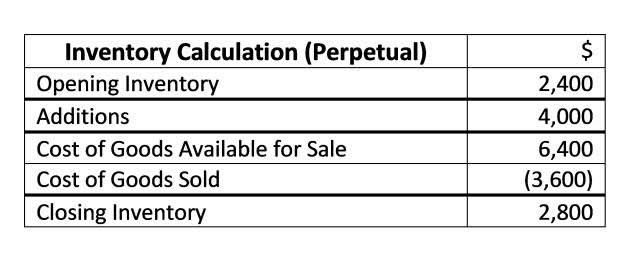Content

The retained earnings of a company refer to the profits generated, and not issued out in the form of dividends, since inception. If your company pays dividends, you subtract the amount of dividends your company pays out of your net income. Let’s say your company’s dividend policy is to pay 50 percent of its net income out to its investors. In this example, $7,500 would be paid out as dividends and subtracted from the current total. Examples of these items include sales revenue, cost of goods sold, depreciation, and other operating expenses.
- Reinvest it back to the business for the purpose of expanding its operations such as purchasing a capital asset that may be used to boost production.
- It could also be because the law required the corporation to restrict some of its retained earnings when it repurchases its outstanding shares .
- If a company issued dividends one year, then cuts them next year to boost retained earnings, that could make it harder to attract investors.
- On the balance sheet, the retained earnings value can fluctuate from accumulation or use over many quarters or years.
- As mentioned earlier, retained earnings appear under the shareholder’s equity section on the liability side of the balance sheet.
- If a business has committed to regularly giving out dividends, it may have lower retained earnings.
No matter how they’re used, any profits kept by the business are considered retained earnings. Dividends can be paid out as cash or stock, but either way, they’ll subtract from the company’s total retained earnings. Retained earnings, also referred to as “earnings surplus”, are reported in the balance sheet under stockholders equity. Retained earnings represent the net earnings of a business that are not paid out as dividends. Since stock dividends are dividends given in the form of shares in place of cash, these lead to an increased number of shares outstanding for the company.
What Are Retained Earnings? (Plus How To Calculate Them)
If the company has retained positive earnings, this means that it has a surplus of income that can be used to reinvest in itself. Negative profit means that the company has amassed a deficit and owes more money in debt than what the business has earned. Retained earnings are reported on the balance sheet under the shareholder’s equity section at the end of each accounting period. Retained Earnings are the portion of a business’s profits that are not given out as dividends to shareholders but instead reserved for reinvestment back into the business. These funds are normally used for working capital and fixed asset purchases or allotted for paying of debt obligations. Now, if you paid out dividends, subtract them and total the Statement of Retained Earnings.
They could decide to either distribute it as dividends to shareholders or to keep all of it for reinvestment. For more information on using retained earnings,read Session 6 of MOBI’s Business Expansion Course. If you need help with your business growth strategy,sign up for the MOBI Business Expansion certificate course. If the firm has good investment opportunity available then, they’ll invest the retained earnings and reduce the dividends or give no dividends at all.
By accessing and using this page you agree to the Terms and Conditions. Terms and Conditions.
Similarly, the iPhone maker, whose fiscal year ends in September, had $70.4 billion in retained earnings as of September 2018. Yarilet Perez is an experienced multimedia journalist and fact-checker with a Master of Science in Journalism. She has worked in multiple cities covering breaking news, politics, education, and more. This post is intended to be used for informational purposes only and does not constitute as legal, business, or tax advice. Please consult your attorney, business advisor, or tax advisor with respect to matters referenced in our content. Xendoo assumes no liability for any actions taken in reliance upon the information contained herein. You need to know your net income, also known as net profit, to calculate it.
- Ongoing, strategic financial planning should include maintaining detailed documentation to qualify for as many tax credits and deductions as possible.
- Excessively high retained earnings can indicate your business isn’t spending efficiently or reinvesting enough in growth.
- Public companies have many shareholders that actively trade stock in the company.
- On the balance sheet, companies strive to maintain at least a positive shareholder’s equity balance for solvency reporting.
- We also reference original research from other reputable publishers where appropriate.
- If your business is seasonal, like lawn care or snow removal, your retained earnings may fluctuate substantially from one quarter to the next.
- In industries where the business is highly seasonal, such as the retail industry, companies may need to reserve retained earnings during their profitable periods.
This document/information does not constitute, and should not be considered a substitute for, legal or financial advice. Each financial situation is different, the advice provided is intended to be general. Please contact your financial or legal advisors for information specific to your situation. This is to say that the total market value of the company should not change. Retained earnings can be used to pay off existing outstanding debts or loans that your business owes. This post is to be used for informational purposes only and does not constitute legal, business, or tax advice. Each person should consult his or her own attorney, business advisor, or tax advisor with respect to matters referenced in this post.
Impact of dividends on RE
One important metric to monitor business performance is the retained earnings calculation. Businesses https://www.bookstime.com/ that generate retained earnings over time are more valuable, and have greater financial flexibility.
- If dividends are granted, they are generally given out after the company pays all of its other obligations, so retained earnings are what is left after expenses and distributions are paid.
- These dividends, often paid out quarterly either as cash or stock in the company, are like a reward for a shareholder’s investment.
- Therefore,In this process, the company’s asset value in the balance sheet reduces.
- This is logical since the revenue accounts have credit balances and expense accounts have debit balances.
- So, if you as an investor had a 0.2% (200/100,000) stake in the company prior to the stock dividend, you still own a 0.2% stake (220/110,000).
When retained earnings are negative, it’s known as an accumulated deficit. Retained earnings are usually reinvested in the company, such as by paying down debt or expanding operations. Any investors—if the new company has them—will likely expect the company to spend years focusing the bulk of its efforts on growing and expanding. There’s less pressure to provide dividend income to investors because they know the business is still getting established. If a young company like this can afford to distribute dividends, investors will be pleasantly surprised. Send invoices, get paid, track expenses, pay your team, and balance your books with our free financial management software.
Revenue vs. Retained Earnings: An Overview
It is important to note that none of these uses are mutually exclusive. A growing business might decide to utilize retained earnings to finance growth while reducing debt simultaneously. Additionally, retained earnings is often used to finance possible mergers and acquisitions where a target business might provide some synergy or cost efficiencies. When evaluating the amount of retained earnings that a company has on its balance sheet, consider the points noted below. Gross revenue is the total amount of revenue generated after COGS but before any operating and capital expenses. Thus, gross revenue does not consider a company’s ability to manage its operating and capital expenditures. However, it can be affected by a company’s ability to price and manufacture its offerings.

If you calculated along with us during the example above, you now know what your retained earnings are. Knowing financial amounts only means something when you know what they should be. Malia owns a small bookstore and wants to bring on an investor to help expand the shop to multiple locations. The goal of reinvesting retained earnings back into the business is to generate a return on that investment . In order for a business to keep functioning, they will redistribute their retained earnings into their business to either invest or pay off debts.
Net losses
The remaining balance is added to the Balance Sheet in the Equity category, under the Retained Earnings subheading. Banks and other creditors will typically require a corporation’s audited financial statements before they would grant a loan. It gives us information regarding any changes to a corporation’s retained earnings in a given period. A sole-proprietorship does not maintain a retained earnings account but What are Retained Earnings rather all of its retained earnings go to its owner’s equity. Sole-proprietorships, partnerships, and LLCs do have retained earnings but they appear as a different account title in their respective balance sheets. There really is no law that requires a corporation to have retained earnings. If a corporation has a high amount of restricted retained earnings, it might signify that it is planning for major growth .

If the company has been operating for a handful of years, an accumulated deficit could signal a need for financial assistance. For established companies, issues with retained earnings should send up a major red flag for any analysts. On the other hand, new businesses usually spend several years working their way out of the debt it took to get started. An accumulated deficit within the first few years of a company’s lifespan may not be troubling, and it may even be expected. Retained earnings can be used to shore up finances by paying down debt or adding to cash savings. They can be used to expand existing operations, such as by opening a new storefront in a new city.
For example, before a creditor grants you a loan, they might require your corporation to restrict a portion of your retained earnings. Unlike unrestricted retained earnings, restricted retained earnings cannot be used for the distribution of dividends . This way, the creditor is more assured that the corporation would likely have funds to pay off the loan. It could also be because the law required the corporation to restrict some of its retained earnings when it repurchases its outstanding shares . PNC had retained earnings of $302 million that can be used to help make debt payments or be reinvested in the company. Below, you’ll find the formula for calculating retained earnings and some of the implications it has for both businesses and investors. In addition, use of finance and accounting software can help finance teams keep a close eye on cash flow and other critical metrics.
How do you remove retained earnings from a balance sheet?
A retained earnings balance is increased when using a credit and decreased with a debit. If you need to reduce your stated retained earnings, then you debit the earnings.
We also reference original research from other reputable publishers where appropriate. You can learn more about the standards we follow in producing accurate, unbiased content in oureditorial policy.
This is the figure you’ll record in the retained earnings account on your next business balance sheet. While Retained Earnings is expressed as a dollar amount, it is not held in a cash account.
Is retained earnings a current asset?
No, retained earnings is not a current asset for accounting purposes. A current asset is any asset that will provide an economic benefit for or within one year. Retained earnings refers to the amount of net income a company has left after paying dividends to shareholders.
In fact, what the company gives to its shareholders is an increased number of shares. Accordingly, each shareholder has additional shares after the stock dividends are declared, but his stake remains the same.
Accumulated Deficits
Pensions and foreign exchange translations are examples of these transactions. Both revenue and retained earnings can be important in evaluating a company’s financial management. For an analyst, the absolute figure of retained earnings during a particular quarter or year may not provide any meaningful insight. Observing it over a period of time only indicates the trend of how much money a company is adding to retained earnings. If the business had a net profit of $30,000 for 2021, add it to the beginning retained earnings. If you are preparing a statement for 2021, your beginning retained earnings is the figure on the balance sheet at the end of 2020. If you made $70,000 in revenue and spent $60,000, your net income for the month is $10,000.
The most basic financial equation in a company is Assets less Liabilities equals Stockholders’ Equity. Stockholders’ Equity is then further broken down into Capital Stock and Retained Earnings. The Retained Earnings account is built from the closing entries from the Balance Sheet, Income Statement, Statement of Cash Flows and Statement of Retained Earnings. Those closing entries can be debited from their respective accounts and credited to Retained Earnings.